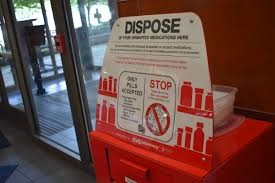DEA Controlled Substances

The Controlled Substances Program applies to all university faculty and staff who handles and work with Controlled Substances in their scientific research. This Program is designed to provide guidance and procedures for Controlled Substances research at SMU and is in accordance with applicable (DEA) regulations. The purpose of this program is to establish a proactive, in-place management program for recognizing and regulating Controlled Substances research at SMU.
Copies of the Controlled Substances Management Program should be made available to the PI, registrant and Authorized Users. The program will be annually evaluated by EHS.
Details concerning different components of the program are discussed below:
Classifications
- Schedule I Controlled Substances currently have no accepted medical use in the United States, and have a high potential for abuse.
- Examples: heroin, marijuana, and methaqualone.
- Schedule II Controlled Substances have high abuse potential that can lead to severe psychological or physical dependence.
- Examples: methadone, oxycodone, morphine, and codeine.
- Schedule III Controlled Substances have less abuse potential than both Schedules I and Il but can still lead to moderate or low physical dependence or high physiological dependence.
- Examples: ketamine, anabolic steroids, and phendimetrazine.
- Schedule IV Controlled Substances have a lower potential for abuse than Schedule III Controlled Substances.
- Examples: midazolam, diazepam, and alprazolam.
- Schedule V Controlled Substances have a low potential for abuse and mostly consist of preparations with limited quantities of narcotics
- Examples: cough preparations containing not more than 200 milligrams of codeine per 100 milliliters or per 100 grams and ezogabine.
Licensing and Registration
Compliance with all applicable legal requirements pertaining to Controlled Substances research is the ultimate responsibility of the Principle Investigators (PI), registrant and Authorized Users. PI and registrant are required to apply for and obtain the appropriate license and registration individually.
Storage and Security Controls

Controlled Substances must be kept in a secured area and accessible only by the designated Authorized Users. The quantity of the Controlled Substances and number of Authorized Users should be kept at a minimum. Authorized Users should only access Controlled Substances when an experiment is being performed in real-time. Controlled Substances should never be left unattended.
Ordering and Purchasing
A DEA license is required for the ordering and purchasing of Controlled Substances. Purchases must be made through a DEA-approved licensed dispenser. Documents pertaining to the ordering, purchasing, and receiving of the Controlled Substances must be retained and recorded.
Disposal

Disposal should be done appropriately by a DEA certified reverse distributor. Controlled Substances must remain in a secured area while awaiting disposal. Expired or unused materials must follow the same disposal procedure. Research animals that have been treated with Controlled Substances must be disposed of appropriately following the routine waste disposal procedures set forth by EHS and IBC/IACUC. Documents pertaining to the disposal of the Controlled Substances must be retained and recorded by the laboratory.
Reporting of Destruction, Loss, Theft, and Unauthorized Uses
In the event of any Controlled Substance destruction, loss, theft, or unauthorized use, the incident must be reported immediately to the DEA, SMU Police Department, and EHS. The reporting deadline for the DEA is 24 hours within incident discovery. DEA reporting requirements and forms on Controlled Substances incidents can be found here.
Recordkeeping

All Controlled Substance records must be kept separate from all other laboratory documents and inside the Controlled Substance Log Book binder. The Controlled Substance Log Book must include the following documents:
- A copy of the DEA Registration
- A list of Authorized Users
- Physical Inventory
- Usage log inventory
- Records of disposal
- Security Release
These documents will be review annually by EHS. All Controlled Substance documents should be legible, accessible, and free of codes, symbols, and foreign languages. All records must be retained for a period of at least three years.
Training

All SMU laboratory personnel working in Controlled Substance research must undergo Controlled Substances management training initially and annually thereafter.
Controlled Substance management training will discuss licensing and registration requirements, laboratory staff responsibilities, inventory records, security, purchasing, storage, disposal, and recordkeeping.
Additional information about the Controlled Substances Management can be found at the following resources:
Controlled Substances Management Program (link to a copy of the program)
Reference
DEA Title 21 Code of Federal Regulations